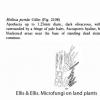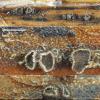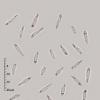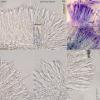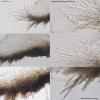
17-09-2025 10:50
Heather MerryleesHi there!I am hoping for any advice on the identif

27-11-2025 15:41
Thomas LæssøeSpores brownish, typically 4-celled; 26.8 x 2.4;

27-11-2025 12:01
Thomas Læssøehttps://svampe.databasen.org/observations/10496727

27-11-2025 11:46
Thomas Læssøehttps://svampe.databasen.org/observations/10493918

27-11-2025 11:31
Thomas LæssøeCollectors notes: Immersed ascomata, erumpent thro

23-09-2025 13:31
Thomas Læssøehttps://svampe.databasen.org/observations/10534623

25-11-2025 14:24
Thomas Læssøehttps://svampe.databasen.org/observations/10490522

26-11-2025 18:13
The entire run of Mycotaxon is now available throu
Mollisia pteridis
Enrique Rubio,
27-04-2020 01:39
The paraphyses have small vacuoles that stain in cresyl blue, but do not contain the large cylindrical and refractive VBs typical of the genus Mollisia.
This fungus that Ellis & Ellis assimilate to Mollisia pteridis and that fits very well with the drawings they make of the lateral and marginal hairs, could also fits with Gillet's succinct description.
What do you think?
Hans-Otto Baral,
27-04-2020 09:02

Re : Mollisia pteridis
Dear Enrique
would you min sending me your pics per mail? They are too small to seee the details.
Surely this is a Pyrenopeziza or because of the hairs perhaps a Pirottaea. I have a folder "Pyrenopeziza rubi on Pteridium", at first glance I think it is the same. One of the collections is by Peter Thompson, and he considered this to be Fuscolachnum pteridis, which cannot be because that species has warted hairs. His remark about this are quite interesting, and I have not the time to go deeper now, but I think it is worth pasting part of his statement here (but I see that your link gives similar information):
"Ascofrance has some entries under this name, in particular Enrique Rubio's entry dated 26 June 2009, which does look quite similar to mine. The resemblance to the sketch which Ellis & Ellis made for the fungus which they called Mollisia pteridis Gillet is quite striking. Last time, we did note that M. pteridis (Albertini & Schweinitz) Gillet is the correct scientific authority. Perhaps the similar E&E description and sketch for Dasyscyphus pteridis (Albertini & Schweinitz) Massee is actually another collection of the same fungus."
Enrique Rubio,
27-04-2020 10:29
Re : Mollisia pteridis
Hi Zotto
Obviously it is not Fuscolachnum pteridis and I don't think it can be a Pirottaea either. Morphologically, with these submarginal or lateral long brownish septate hairs, it even remember me Pyrenopeziza escharodes.
Of course it is the same fungus in your "Pyrenopeziza rubi on Pteridium" folder.
Obviously it is not Fuscolachnum pteridis and I don't think it can be a Pirottaea either. Morphologically, with these submarginal or lateral long brownish septate hairs, it even remember me Pyrenopeziza escharodes.
Of course it is the same fungus in your "Pyrenopeziza rubi on Pteridium" folder.
Hans-Otto Baral,
27-04-2020 10:30

Re : Mollisia pteridis
Yes, I overlooked that the hairs are thin-walled. Pyrenopeziza species may be rather host-specific, so it could well be that Pteridium has a species of its own.
It is interesting how the apos in this sample grow on a blackish zone. Not sure if this is typical.
Charles Aron,
27-04-2020 22:33
Hans-Otto Baral,
28-04-2020 09:55

Re : Mollisia pteridis
Yes, this looks so. Was it immature? Also here the apos seem to seat on darkened patches.
Charles Aron,
28-04-2020 20:02

Re : Mollisia pteridis
Hi Zotto,
Yes, the apos were immature and I've had to wait some time for asci and ascospores to appear which agree with Mollisia pteridis sensu E & E.
Charles.
